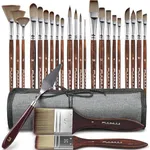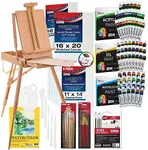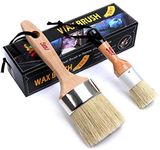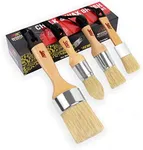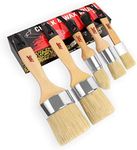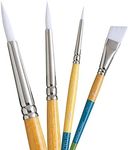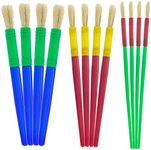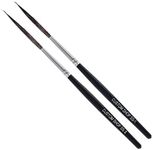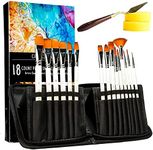We Use CookiesWe use cookies to enhance the security, performance,
functionality and for analytical and promotional activities. By continuing to browse this site you
are agreeing to our privacy policy
10 Best Artists Paint Brushes 2025 in the United States
From leading brands and best sellers available on the web.How do we rank products for you?
Our technology thoroughly searches through the online shopping world, reviewing hundreds of sites. We then process and analyze this information, updating in real-time to bring you the latest top-rated products. This way, you always get the best and most current options available.

Buying Guide for the Best Artists Paint Brushes
Choosing the right artist's paint brush can significantly impact your painting experience and the quality of your artwork. The right brush will depend on the type of paint you are using, the techniques you want to employ, and the level of detail you wish to achieve. Understanding the key specifications of paint brushes will help you make an informed decision and select the best brush for your needs.Brush ShapeBrush shape refers to the design of the brush tip, which affects the type of strokes you can create. Common shapes include round, flat, filbert, and fan. Round brushes are versatile and can be used for detailed work and broad strokes. Flat brushes are great for bold, sweeping strokes and filling in large areas. Filbert brushes have a rounded edge, making them ideal for blending and creating soft edges. Fan brushes are used for blending and creating textures. Choose a shape based on the techniques you plan to use in your artwork.
Brush SizeBrush size is indicated by a number, with smaller numbers representing finer brushes and larger numbers representing broader brushes. The size you choose will depend on the level of detail you need and the size of your canvas. For detailed work and small canvases, opt for smaller brushes. For larger canvases and broader strokes, larger brushes are more suitable. Consider the scale of your work and the precision required when selecting brush sizes.
Bristle TypeBristle type refers to the material of the brush hairs, which can be natural or synthetic. Natural bristles, such as hog or sable, are often preferred for oil paints due to their ability to hold a lot of paint and create smooth strokes. Synthetic bristles are versatile and can be used with various types of paint, including acrylics and watercolors. They are also more durable and easier to clean. Choose bristle type based on the paint medium you use and your preference for brush feel and performance.
Handle LengthHandle length affects the control and comfort of the brush. Short handles are typically used for detailed work and are preferred by artists who work close to their canvas. Long handles are used for painting at a distance and are common in easel painting. Consider your painting style and the distance at which you work from your canvas when choosing handle length. Short handles offer precision, while long handles provide leverage and a broader range of motion.
Ferrule QualityThe ferrule is the metal part that connects the bristles to the handle. A high-quality ferrule is essential for durability and preventing bristle shedding. Look for ferrules made of rust-resistant metals like nickel or brass. A well-constructed ferrule will ensure that the bristles stay securely in place and the brush maintains its shape over time. Investing in brushes with good ferrule quality will enhance the longevity and performance of your brushes.
FAQ
Most Popular Categories Right Now


